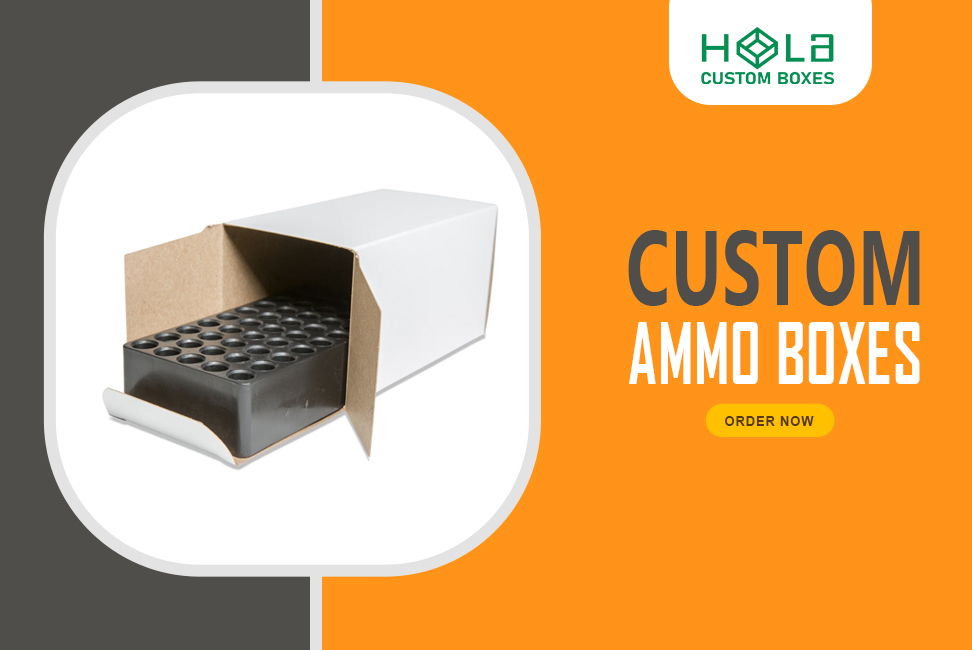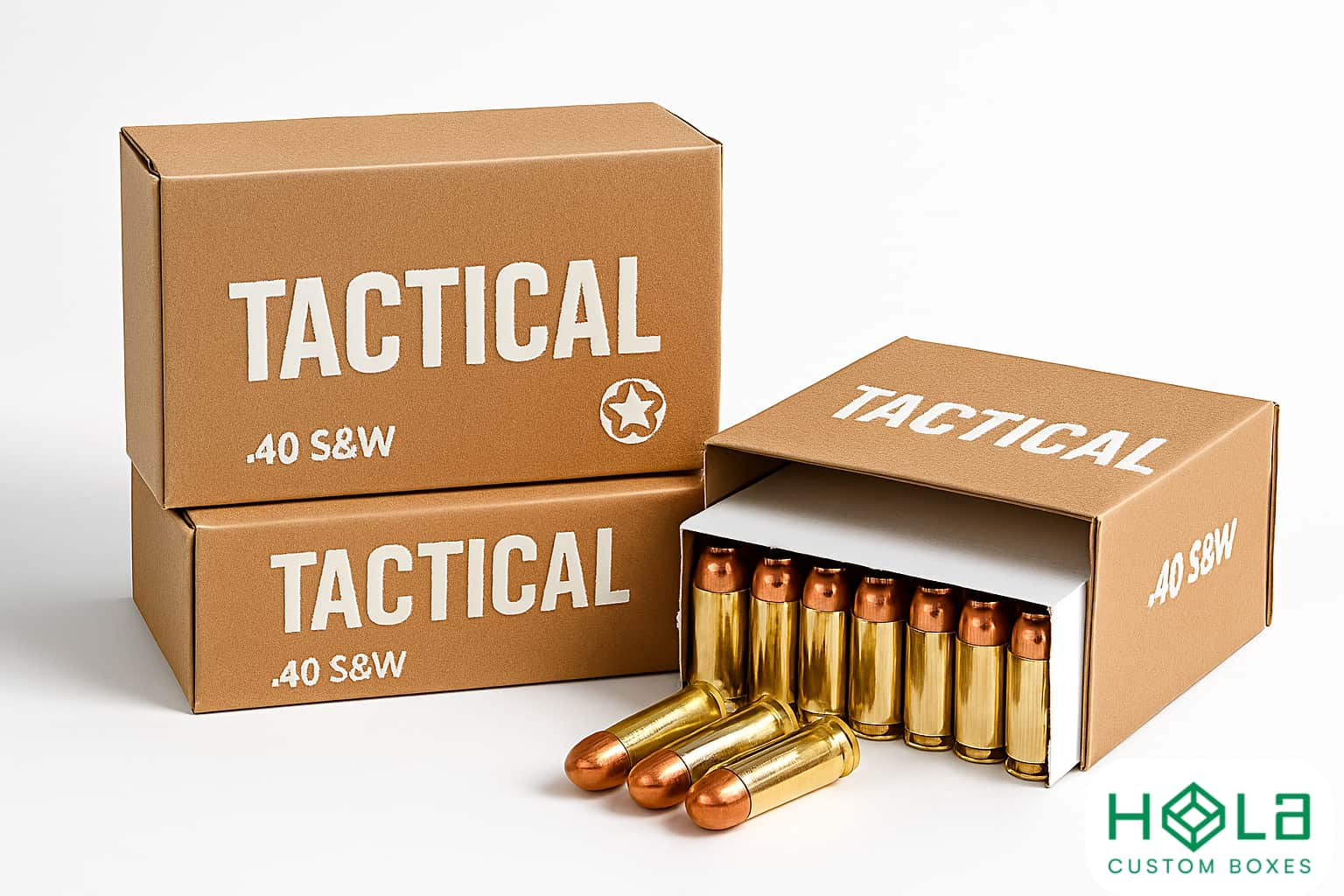6 Essential Steps to Manufacture Cardboard Ammo Boxes
2026-01-09 21:24:11
Did you know that the global ammunition market size is expected to reach $22.8 billion by 2027?
As demand for ammunition continues to rise, it is crucial to understand the essential steps involved in manufacturing cardboard ammo boxes.
This article provides a comprehensive guide to the 15 steps required to produce high-quality, reliable cardboard ammo boxes.
From material selection to quality control, these steps will ensure the safe and efficient packaging of ammunition, empowering you to meet the demands of a growing market.
Key Takeaways
- Prioritize sustainability and cost-effectiveness in material selection
- Ensure precise box measurements and design for secure storage and transportation
- Use proper cutting and scoring techniques to produce high-quality cardboard boxes
- Secure the boxes with adhesive or fasteners, considering alternative closure methods for efficiency and reducing environmental impact
Material Selection For Cardboard Ammo Boxes
One crucial step in the manufacturing of cardboard ammo boxes is selecting suitable materials. Sustainability considerations and cost-effectiveness analysis are significant in this decision-making process. When selecting materials, it is important to prioritize environmentally friendly options that can be recycled or reused. This aligns with sustainability goals and reduces the overall environmental impact. Additionally, conducting a cost-effectiveness analysis ensures that the chosen materials provide the best value for money without compromising quality.
By carefully considering these factors, manufacturers can create cardboard ammo boxes that are both sustainable and cost-effective.
With the selection of suitable materials complete, the next step is to focus on box design and measurements, which will be discussed in the subsequent section.
Cardboard Ammo Box Design and Measurements
After carefully selecting suitable materials, the next crucial step in manufacturing cardboard ammo boxes is to focus on box design and measurements. Custom printing enables targeted branding and labeling, ensuring the boxes are easily identifiable. This adds a professional touch and helps with organization and inventory management. Additionally, sustainability options should be considered during the design phase. Incorporating eco-friendly materials and practices can help reduce waste and promote environmental responsibility.
Box measurements must be precise to ensure the ammo fits securely and snugly, preventing damage during transportation or storage. Once the design and measurements are finalized, the next step is to cut and score the cardboard, as discussed in the following section.
Cutting and Scoring the Cardboard Ammo Box
To begin manufacturing cardboard ammo boxes, cutting and scoring the cardboard is a critical step that ensures precise dimensions and structural integrity. Scoring techniques involve creating shallow cuts on the cardboard surface, allowing it to fold easily and form clean edges. This step is essential in achieving a professionally finished product.
To score the cardboard, various equipment is needed, including a scoring tool or a rotary scorer. These tools allow for accurate scoring lines, ensuring the cardboard can be folded without cracking or tearing.
A cutting tool, such as a utility knife or a box cutter, is necessary to cut the cardboard to the required dimensions. Proper cutting and scoring techniques and the right equipment are vital for producing high-quality cardboard ammo boxes.
Looking for durable and customizable cardboard ammo boxes that reflect your brand’s identity and meet industry standards? Explore our full range of USA-made solutions at Hola Custom Boxes:
https://holacustomboxes.com/product/cardboard-ammo-box-manufacturer
Folding and Assembling the Cardboard Ammo Box
To continue the manufacturing process of cardboard ammo boxes, the next crucial step is the precise folding and assembly of the box. This step requires careful attention to detail and proper folding techniques to ensure a sturdy and secure final product.
Here are five important aspects to consider during the assembly process:
- Aligning the flaps correctly to create a seamless box structure.
- Using a scoring tool to create clean and crisp fold lines.
- Applying even pressure when folding to prevent creases or tears in the cardboard.
- Checking for proper fit and alignment before securing the box.
- Following a step-by-step process to ensure all components are correctly assembled.
Once the box is folded and assembled, it is ready to secure it with adhesive or fasteners.
Securing the Ammo Box With Adhesive or Fasteners
The cardboard ammo box is secured by applying adhesive or fasteners to ensure stability and durability. In addition to traditional closure methods such as tape or staples, alternative closure methods can be used to secure the box.
One such method is self-locking tabs, which eliminate the need for additional adhesive or fasteners. This saves time and effort during the manufacturing process and reduces the environmental impact by minimizing the use of non-recyclable materials.
Another alternative closure method is interlocking flaps, which provide a secure and tamper-resistant seal.
Quality Control and Packaging For Ammo
Continuing from the previous subtopic, an essential aspect of the manufacturing process for cardboard ammo boxes is the implementation of comprehensive quality control measures and meticulous packaging techniques. To ensure the highest level of quality and safety, the following measures are taken:
Inspection Process: Each cardboard ammo box undergoes a rigorous inspection to detect defects or imperfections. This includes checking the dimensions, structural integrity, and overall box quality.
Shipping Requirements: The packaging of cardboard ammo boxes is designed to meet specific shipping requirements. This includes ensuring the boxes are secure and properly sealed to prevent any damage during transit.
Protective Packaging: To protect the contents of the ammo boxes, additional protective materials, such as foam inserts or bubble wrap, are used. This helps to cushion the items and prevent any movement or impact during shipping.
Labeling and Documentation: Each cardboard ammo box contains relevant information, including the product name, quantity, and necessary warnings or handling instructions. All necessary documentation, such as shipping labels and manifests, are also prepared and included with the boxes.
Batch Tracking: A robust batch tracking system is implemented to ensure traceability and accountability. This allows for easy identification and tracking of each batch of cardboard ammo boxes throughout the manufacturing and shipping process.
Ready to Upgrade Your Ammo Packaging?

